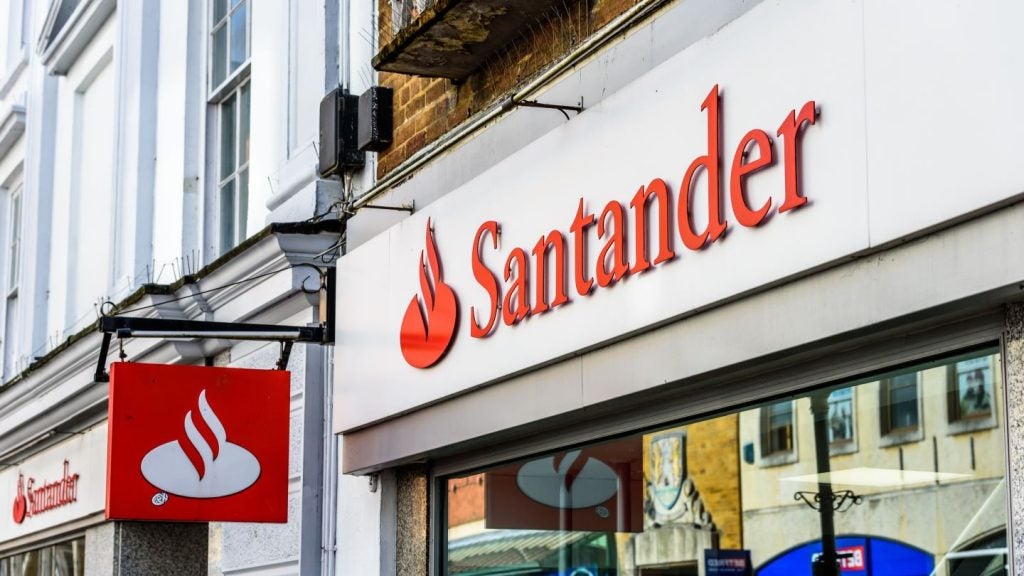
The conclusion of the latest International Monetary Fund (IMF) bilateral consultation with Sweden was favourable for the Scandinavian nation.
Sweden’s economy is performing well, with real GDP growth of 3.4% in the first three quarters of 2015, up from 2.3% in 2014. Job creation was robust in the first three quarters of 2015, helping bring the unemployment rate down to 7.2% in the third quarter. Growth of about 3% is expected to continue through this year.
Since early 2015 the Riksbank (the central bank of Sweden) has implemented negative interest rates, cutting the repo rate in three steps to -0.35%. It also purchased SEK135bn in government bonds in 2015, accounting for some 20% of the outstanding stock.
The IMF welcomed Sweden’s solid economic growth, which reflects supportive macroeconomic policies and strong domestic demand. The stimulatory stance of monetary policy to address weak inflation expectations and protect the effectiveness of the inflation target in promoting macroeconomic stability has worked well for Sweden.
However, the IMF also observed that Sweden faces major challenges including a sharp rise in migrant inflows, rapidly rising housing prices and elevated household debt and inflation that remains below target.
The IMF agrees that the country’s broadly neutral fiscal stance is appropriate and considers that balancing the central government budget would be sufficient to safeguard Sweden’s fiscal buffers. It has called on the government to raise the limit on capital gains tax deferrals and expand subsidies for building affordable rental apartments in areas with jobs to support a soft landing of housing prices.
Data from Finansbolagens Förening (the Association of Swedish Finance Houses) covering both lending and leasing volumes shows that the amount of finance outstanding at the end of last year was SEK252bn, of which SEK72bn was in foreign currency. This total represents an increase of 4.6% on the figure for 2014 (SEK241bn).
How well do you really know your competitors?
Access the most comprehensive Company Profiles on the market, powered by GlobalData. Save hours of research. Gain competitive edge.

Thank you!
Your download email will arrive shortly
Not ready to buy yet? Download a free sample
We are confident about the unique quality of our Company Profiles. However, we want you to make the most beneficial decision for your business, so we offer a free sample that you can download by submitting the below form
By GlobalDataLeasing accounted for 45% or SEK114bn of the outstanding amount, a percentage that has remained almost unchanged over the last five years apart from 2012 when it reached 48%.
The market breakdown reveals that passenger cars accounted for the largest amount of lease volume, reaching SEK34bn last year – the highest figure for five years. Other transport equipment (SEK22bn) was the next largest category, of which rolling stock was by far the largest sub-category with SEK19bn. The market for computers and peripheral equipment is also substantial, accounting for almost SEK12bn in 2015.
Agneta Brandimarti, senior legal adviser at the Swedish Bankers Association observes that the leasing market in Sweden is well established across all sectors.
"Leasing penetration among Swedish SMEs is around 20% and is strongest among the smallest companies," explains Brandimarti. "The most used assets for leasing are passenger cars and the market is dominated by the bank-owned lessors."
When asked about the main challenges (regulatory and otherwise) facing the market, she refers to complying with new regulations while at the same time being able to meet expectations from customers for faster processes as the main short term issue. "In the longer term, the new accounting rules from IASB regarding leasing will create a lot of changes in the market," she adds.
According to Jonas Boos, country manager SGEF Sweden, low interest rates and a positive outlook for the economy have created a positive environment for lease activity. "The market is growing since Swedish companies need to invest in new equipment to meet demand. One challenge is the new IFRS rules, which might make leasing less attractive when they are introduced."
He refers to the cost of financing, accounting rules and the simplicity and availability of financing as the key factors impacting demand. "In relation to simplicity and availability I mean the resellers/dealers offer a financing solution to the customer as an alternative to paying cash or contacting the bank for a loan," he explains.
Boos says that data from Swedish banks suggests that the market share break down between bank-owned and independent lessors is almost three-to-one in favour of the former (74% compared with 26%).
The Swedish government does not support the growth of the lease finance industry directly, but it is focused on making sure that Swedish companies can finance themselves, he continues. "It does not directly mention lease finance but the lease finance industry of course benefits from this."
As for his expectations for growth in the leasing market over the next 12 months, Boos acknowledges that it is hard to make predictions for future growth since there are so many uncertain factors. "All other things being equal I would expect growth in the next 12 months of around 5%."
A Swedbank spokesperson also refers to growing demand for leasing services in Sweden, adding increased demand for cars, leisure boats and other equipment to the list of factors that make lease financing attractive at the moment.
"In terms of the main challenges (regulatory and otherwise) facing the market, it is important to observe that new regulations – regarding both accounting and anti-money laundering (AML)/know your customer (KYC) – are implemented on a phased basis," he says.
"The new IFRS 16 is a challenge as it will be more complicated for corporate customers to handle leasing accounting. Also, tougher AML/KYC regulations are putting pressure on the vendor financing market. Banks need to secure more information regarding each customer and this handling is outsourced to vendors, which means more administration for both banks and vendors and makes it more time consuming to offer leasing to customers."
The Swedbank spokesperson estimates that the lease market (excluding real estate, which is not a significant market by volume) grew by 4.6% last year in terms of lending volumes, with a 12% increase in new sales.
There is a VAT advantage for vehicle (car and light trucks) leasing compared to buying in Sweden, together with a relatively low benefit value (compared to other countries) for drivers driving company-owned cars, he explains.
"Consumer leasing has experienced strong growth over the last 12 months. For many years the percentage of new car sales financed through leasing was in the low single digits – preliminary figures for the first quarter of 2016 indicate that more than 25% of new car sales to consumers were financed through leasing, mainly as a replacement for alternatives such as hire purchase."
He suggests that the market share controlled by bank-owned lessors is even higher than the bank data outlined above at 80% and is confident that the level of growth experienced last year can be sustained through 2016.
Carmen Ene, chief executive of 3StepIT is also bullish. "We did a study on where we have been selling our services and one common theme showed up across companies in all industries and of all sizes – if they are growing they tend to use leasing more," she says.
"As a business grows there are many demands made on its cash resources, so it makes more sense than ever to use financing. The economy is growing fast and business is investing, which will drive financing."
She believes that the removal of the uncertainty surrounding the new lease accounting standard is a helpful development and that the simplification of the rules will benefit the market by removing what she describes as the "false distinction" between operating and finance leases.
"Of course, now we need to help our customers move to the new standard and that is an educational task as well as a systems opportunity," adds Ene. "Looking beyond financing to asset use generally, environmental regulation and legislation is on an ever tightening ratchet and sooner or later, depending on the class of asset, this will affect end of lease behaviour."
She says demand for IT was strong over the last 12 months, despite the absence of active support from the Swedish government for the lease finance industry in general.
"The government wants a healthy economy and competitive business sector and its policies seem to be working," says Ene. "Sweden recovered rapidly from the global financial crisis and in 2015 our economy grew by 4.5%. Of course there are risks in that high growth, not least how it will cool down to a more sustainable rate, especially when there is a transition to more normal, higher interest rates."
Her expectations for growth in the leasing market over the next 12 months are coloured by the reality that a growing economy with low or even negative base rates provides the right dynamics for leasing in general. "While the pure financing cost element is low we believe this will help value-added lessors to flourish, because the value-add elements show up more clearly."
Volvo Financial Services EMEA president, Nils Jaeger, also delivers an upbeat assessment of the health of the leasing market in Sweden, noting that his company is a strong contributor to the overall performance of Volvo Group.
He describes the main challenges for the Swedish market as being common to many other European markets – regulatory changes, IFRS changes and strong competition due to the large amount of liquidity in the market.
"In our trucking business we serve customers in many different segments and the same applies to our financing activity towards Volvo construction equipment and buses," explains Jaeger. "We realise that the size and financial strength of certain customers makes them particularly attractive to other lenders, which we offset through customer convenience at the point of sale and industry expertise."
Pedram Tadayon, chief executive at Emric refers to a large upswing in the number of request for leasing software and is confident that regulation is not hindering the growth of lease activity in the country.
"Automotive has experienced rapid growth in terms of private leasing for consumers in particular over the last 12 months," he says.
"Full service operational leases, which have been the dominant product in the rest of Europe but have experienced limited demand in Sweden, have increased significantly and we also see an increasing demand for mobility solutions based on pay-as-you-use pricing models as well as leasing fleets used for car sharing. Sweden is a market with early adopters and there is a lot of pressure on the players in the market to develop innovative solutions to attract additional customer segments."
According to Tadayon, it is becoming more difficult for small businesses to obtain finance as banks are shying away from unsecured loans for SMEs. As a result SMEs are turning to other financing models, including leasing as well as factoring and hybrid financing.
"Full service operational lease is increasing most rapidly in the SME segment and there is a clear trend of packaging additional services into the lease agreement," he says.
Tadayon divides the factors driving demand for leasing in Sweden into consumer and corporate. For the latter, growth drivers include purchasing power (equipment lease financing allows the lessee to acquire more and/or higher-end equipment); balance sheet management (certain types of leases help the lessee better manage the balance sheet and improve the overall financial picture by conserving operating capital and freeing up working capital and bank credit lines for inventory, expansion and emergencies); asset management (a lease provides the use of equipment for specific periods of time at fixed payments and assumes and manages the risks of equipment ownership); and favourable VAT rules.
"Private vehicle leasing is also motivated by purchasing power as well as increased level of service," he says. "Customers don’t have to worry about maintenance and repairs and there is a clear trend that customer preference moves towards using rather than owning and pay-as-you-use models. Operational private lease solutions are a step in that direction."
"Within automotive we foresee a continued strong development of private lease and operational full service lease volumes in the Swedish market as well as alternative pricing models such as pay-as-you-use," concludes Tadayon.<







